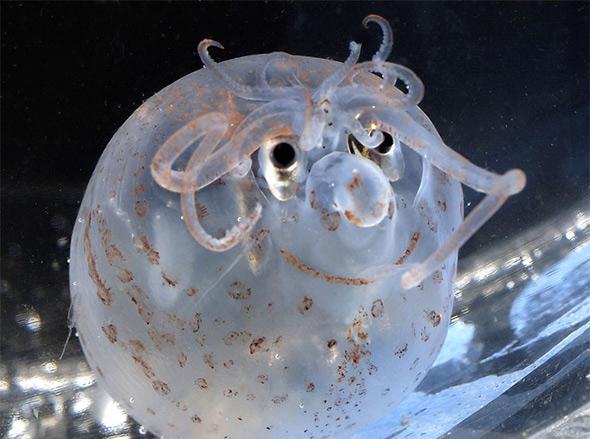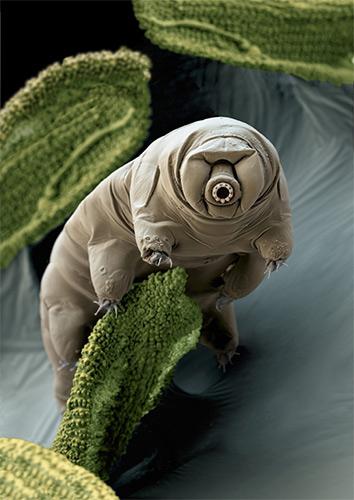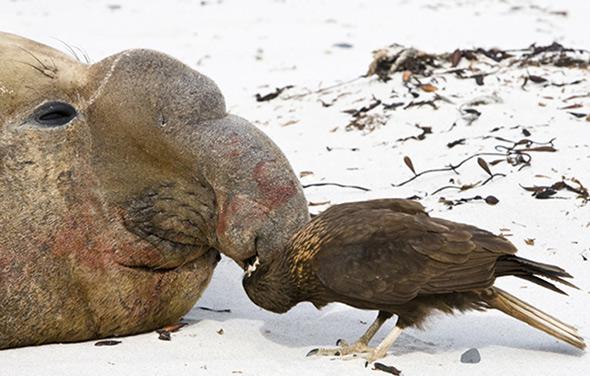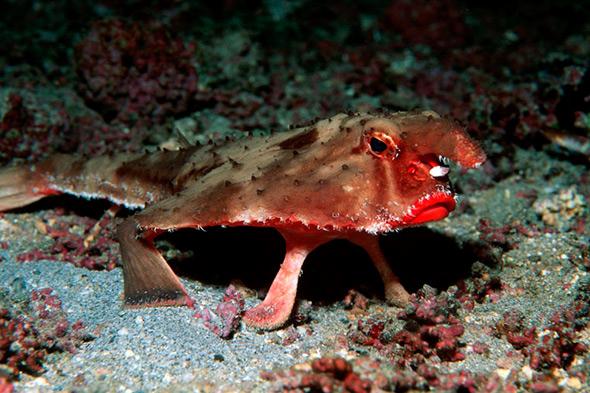I don’t remember now how I first came across the lizard video. Maybe it popped up somewhere in the endless stream of journal articles that, as a freelance science writer, I scroll through on a weekly basis. Maybe someone tweeted it. It doesn’t matter. I remember how I felt.
In the video, a lizard called a green anole sits inside a glass laboratory tank. It’s perched on a piece of balsa wood meant to imitate a flexible tree branch. Then, prompted by a startling motion off-screen, the anole moves to jump off of the perch. It flexes its strong hind legs to launch itself into the air.
But as the anole pushes off, the pliable balsa wood bends beneath it. The perch recoils, smacks the anole upside the tail, and pitches the animal forward into a nosedive. The anole splays its little lizard fingers to break its fall as it hurtles face-first onto the ground.
Now, green anoles live in trees. They often jump between the branches of those trees to ambush prey or escape from predators. Sometimes branches are bendy. And yet here was this anole, trying to jump off a bendy piece of wood and doing a spectacularly terrible job.
This wasn’t just one particularly ungainly lizard, either. Biologist Casey Gilman recorded the video in the course of an experiment investigating how well green anoles jump from perches of varying flexibility. She tested 11 different lizards, and every one of them botched the bendy one.

Photo courtesy of Gary Florin/Rex USA
My first thought was: If I were a lizard, this is exactly the kind of lizard I would be. I sometimes stumble over my own ankles and run into walls that I’ve lived with for years. My second thought was: Really? Millions of years of evolution, and they still haven’t figured out jumping off bendy things?
I saved the video to my desktop.
I’d been collecting things like this, mostly in my head, for a while—examples of evolution gone seemingly awry. Organisms that seemed to be … imperfectly adapted, let’s say. Ones that made me think: Really, evolution? What the fuck?

Photo courtesy of Eye of Science/Science Source
One night after work and a few glasses of wine, I thought: Why not start putting them on the Internet? And that’s how my blog, WTF, Evolution?, was born.
In the real world, evolution can’t explain itself. It acts without intention, and unless we find enough revealing fossils, we can’t see all the steps it took to develop a particular organism—all we can see are the results. But on the blog, I imagine what evolution would have to say for itself if it could account for some of its stranger creations. I imagine it would sound a bit like everyone’s least-motivated co-worker, who has a few half-baked ideas but typically does the bare minimum it takes to get by. I think it would go something like this:
“You know that elephant seal I made? The one with the awesome floppy nose?”
“Yes, evolution, that was a pretty good nose.”
“And you know how it kept getting parasites up inside it?”
“I heard that was an issue.”
“I fixed it.”
“You fixed it? What did you do, give the elephant seal more protective mucus? A better immune system? Stronger nose hairs?”
“Nope! That all seemed too hard. I just made a nose-picking bird.”
“A nose-picking bird.”
“Works great!”

An elephant seal, plus bird picking its nose.
Photo courtesy Dickie Duckett/FLPA/Minden Pictures
Here’s the thing about evolution: It’s a powerful force that produces an incredible diversity of adaptations for life on Earth, but it’s not exactly thinking any of them through. It doesn’t have a particular goal in mind when it starts working on an organism. And if it were thinking? It would clearly be out of its mind.
Take the magnificent frigatebird, for example. This skillful flyer makes its home along tropical coastlines. But despite living by water, the frigatebird can’t dive. Its uncoated, non-water-resistant feathers get bogged down when they’re wet and make the bird too heavy to take off again.
So the frigatebird doesn’t dive. Instead, it uses its aerial prowess to harass other seabirds, pecking at them and yanking their tails in midair until they disgorge any fish they just caught. The frigatebird snatches the puked-up meal out of the air and flies off to enjoy it, feathers still dry.
Had evolution designed frigatebirds from scratch, it might have decided that “fish-based diet” should be accompanied by “ability to swim.” It may also have made the birds more graceful on land—their tiny feet make for awkward walking—and chosen a mating display other than the bright red, inflatable chest-bags they currently boast.
But evolution doesn’t work like that. It doesn’t get to plan ahead. It can enhance traits that already exist in an organism, but it can’t typically make anything new. Imagine you want to cook a gourmet dinner, but instead of going to the grocery store you have to cobble the meal together from whatever’s moldering in your pantry after you’ve been on vacation for a week. That’s basically what evolution does all the time. It doesn’t have to be perfect; it just has to be good enough to survive.
The result is a remarkable menagerie of weirdness. Fish with eyes that migrate across their heads as they develop. Lizards that defend themselves by shooting three-foot streams of blood from their own eyes. Pigs with tusks that grow back toward their faces and occasionally grow so long that they fatally pierce the pig’s skull. I could go on. (Tagline for the blog: Go home, evolution, you are drunk.)
When I started the blog, I figured I would keep it up for a few weeks—months, maybe—until I ran out of weird animals I thought evolution could stand to explain. More than 1½ years later, I still haven’t, and the blog has become a book.
Don’t get me wrong: I love all of these awkward, bumbling, hacked-together creatures. I love them more than I love the cute ones. And judging by the following the blog has built, a few other people do, too.
Why do we love them? I think they make us feel better about ourselves. We may not get things right every time, but hey, neither does the greatest force for biological change on the planet. We may look stupid trying to impress people we find attractive, but at least we aren’t inflating our nasal membranes and flapping them around like slimy balloons. (Usually.)
Sure, nature can be majestic, awe-inspiring, and impressively intricate. It can also be inelegant, disgusting, and downright bizarre. Sometimes it’s all of those things at once. As a product of such a strange system, we can be forgiven for not exactly having it together all the time. Evolution isn’t perfect, and neither are we.
